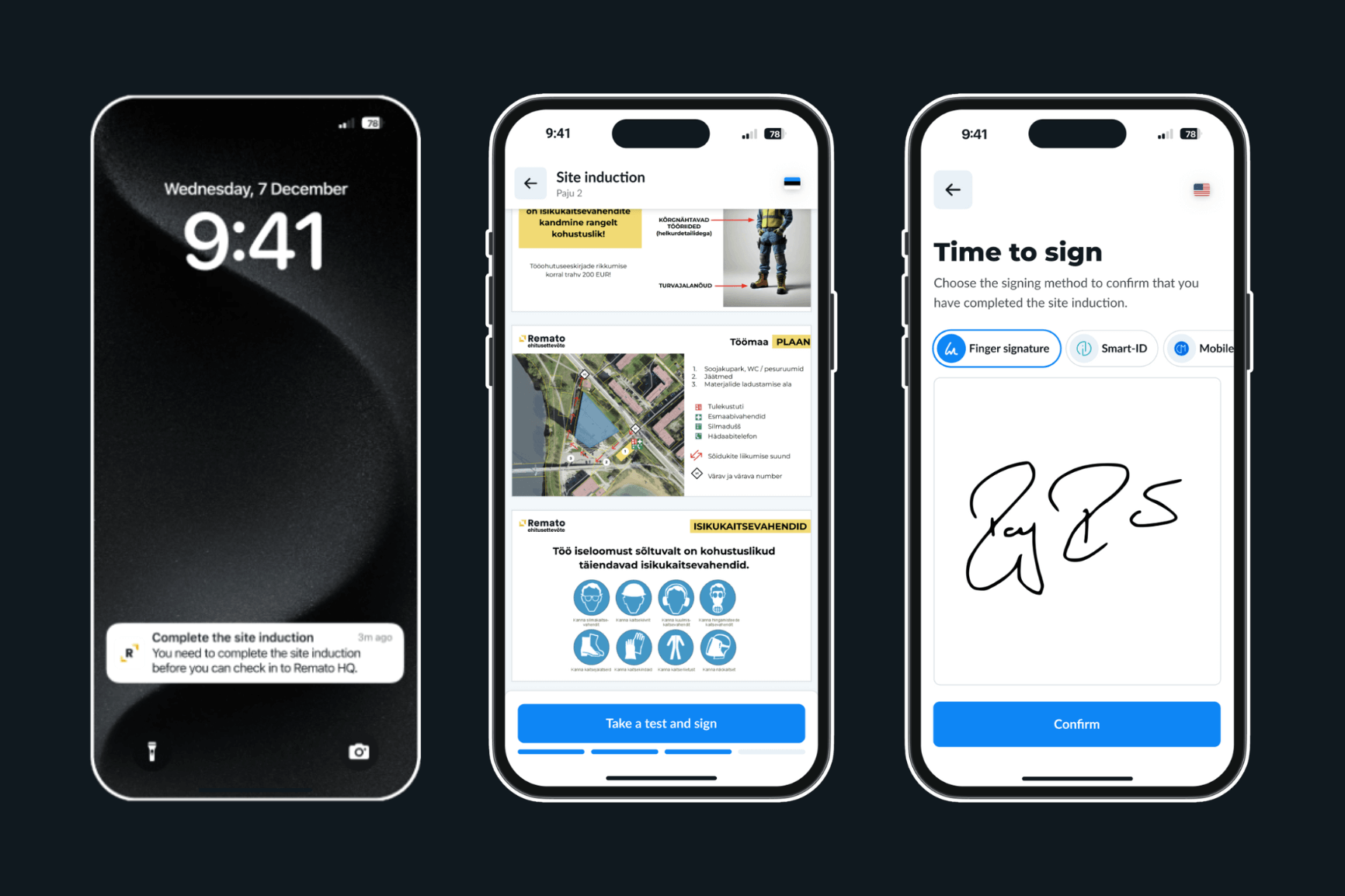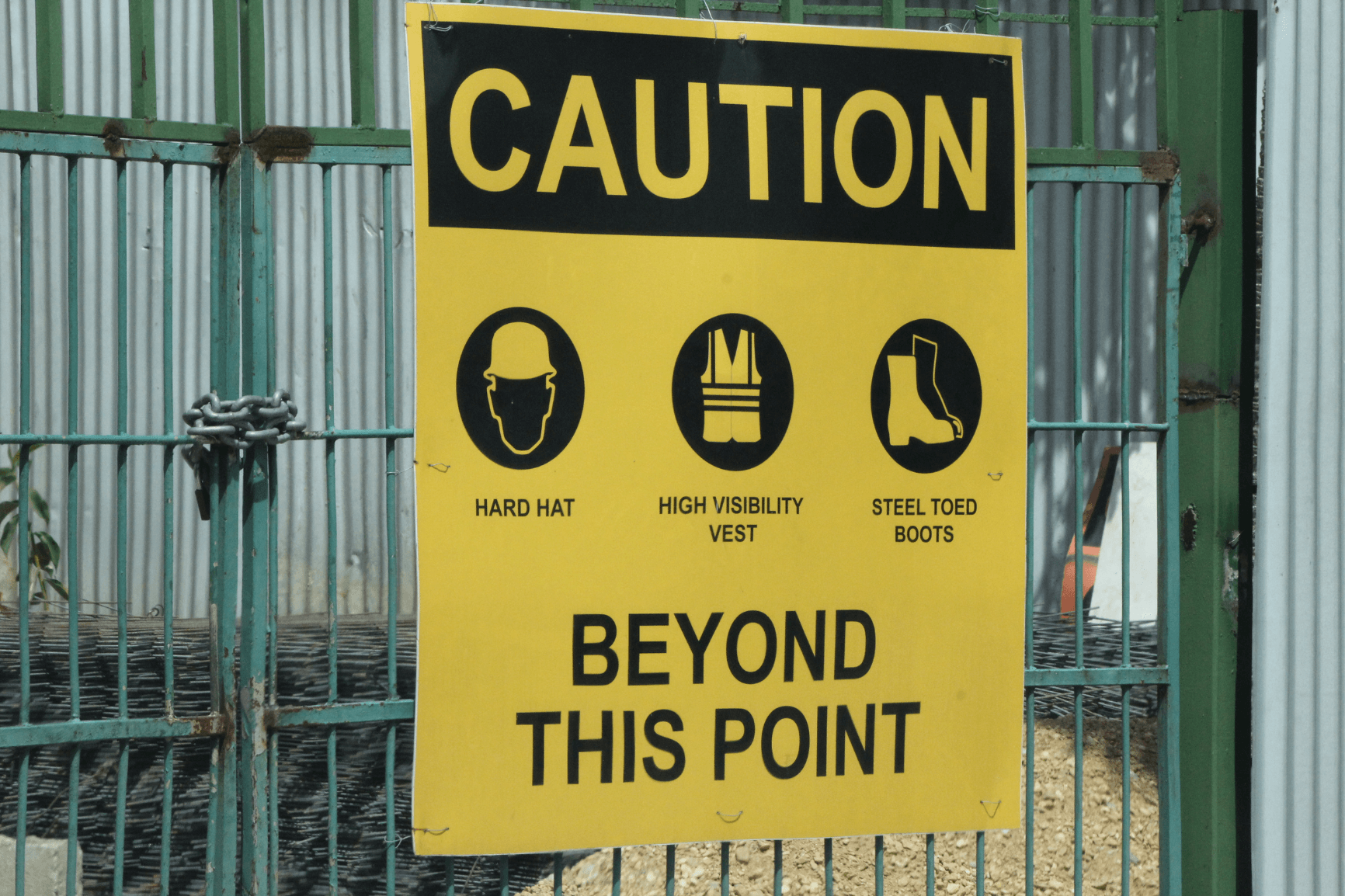Digital Site Induction – A Key to Safe Construction Sites Across Europe
Site safety is far more than wearing a helmet or a high-visibility vest. It is a comprehensive system of clearly defined protocols, personal protective equipment, behavioural guidelines, and management practices designed to prevent accidents and protect everyone on-site. At the very heart of this system is site safety briefings, a structured and legally required process that determines whether a project will operate safely, efficiently, and in full compliance with regulations.
In Estonia, site induction is regulated by the Occupational Health and Safety Act (TTOS), which obligates employers to ensure that every worker has completed site-specific induction before starting work. Similar legal frameworks exist in other European countries: in Finland, the Occupational Safety and Health Act mandates documented site induction; in the Netherlands, the Arbowet requires that every employee is made aware of site risks and safe working procedures; and in Poland, the Labour Code and Building Law Act together establish clear obligations for site induction records and monitoring. Labour inspectors across Europe regularly check that these requirements are fulfilled and that proper documentation is available.
Table of Contents
Why Is Site Induction So Important?
- Site induction significantly reduces the risk of accidents and improves awareness.
- It ensures compliance with national safety regulations, avoiding costly fines or work stoppages.
- Well-organised site induction creates shared understanding of emergency protocols.
- It reinforces the employer’s reputation as a responsible contractor.
Core Elements of Construction Site Safety
1. Risk Assessments and Work Method Statements
Across Europe, employers must regularly conduct risk assessments identifying hazards and defining preventive measures. These assessments and method statements are the basis for every effective site induction.
2. Personal Protective Equipment (PPE)
Employers must provide certified PPE free of charge: helmets, high-visibility clothing, safety boots, gloves, hearing protection. Proper use must be clearly explained during site induction.
3. Site Induction Training
Site induction introduces workers, subcontractors, and visitors to site-specific risks and safety requirements. In Finland and the Netherlands, the induction must be documented and signed before starting work. Poland’s Building Law Act requires employers to maintain clear records proving that every worker has completed safety instructions.
4. Toolbox Talks
Regular short meetings, or toolbox talks, remind teams of safety rules and address specific risks. These sessions often complement the initial site induction.
5. Signage and Barriers
Clear signage in multiple languages is essential. During site induction, workers must be informed about warning signs, restricted zones, and emergency contacts.
6. Incident Reporting
Accidents must be reported immediately. Digital site safety includes instructions on how to report and record incidents in line with national regulations.
7. Training and Competency
Workers performing high-risk tasks—like crane operation or scaffolding—must hold proof of qualifications. Site induction helps verify these certificates and ensure competence.
8. Supervision and Safety Officers
Large projects require designated safety officers who oversee site induction, conduct spot checks, and liaise with inspectors.
9. Emergency Preparedness
Each site must have marked evacuation routes and fire equipment. Site induction covers these procedures and ensures workers know how to act in an emergency.
Problems with Traditional Site Induction Methods
Traditional approaches, such as face-to-face briefings with paper checklists, can be slow, inconsistent, and hard to track. In Finland, Poland, and the Netherlands—where diverse teams often include many nationalities, verbal instructions can easily lead to misunderstandings and costly errors. Paper records may be lost or never signed, creating compliance risks. Delays in delivering site induction can hold up entire projects and frustrate both workers and managers.
Digital Site Induction with Remato
Modern solutions like Remato simplify site induction for construction projects in Estonia, Finland, the Netherlands, and Poland. Workers can complete site induction before arriving on-site, in their preferred language, and sign digitally. All records are automatically stored, accessible to managers and inspectors anytime.
Key Benefits:
- Fully compliant with local regulations across Europe.
- Anytime access—site induction can be completed before the first shift.
- Multilingual options—ideal for international teams.
- Transparent records—you always see who has completed site induction.
- Paperless process—less admin, faster audits.
- Real-time updates—share changes instantly with the whole team.

How Does Digital Site Induction Save Time and Reduce Stress?
- Less paperwork and duplication.
- Supervisors don’t need to repeat the same instructions.
- No delays when sites are far away.
- New updates reach everyone immediately.
- Site induction is standardised and consistent.
When everyone knows what to do, errors and misunderstandings disappear.
What If Workers Are Unsure About Digital Tools?
Some workers may initially feel hesitant about digital processes. The best approach is to demonstrate how site induction works on a mobile device and show that it only takes a few minutes. Digital signatures are legally recognised in Estonia, Finland, the Netherlands, and Poland, and the training materials remain accessible anytime if employees need to check something later. Once workers see how simple and fast it can be, most prefer it over traditional paperwork.
Example in Practice
Imagine a construction project in Tallinn or Helsinki where the evacuation route changes overnight. With Remato, you update the site induction content in one click. Every team member receives a notification, reviews the update, and confirms it digitally. There is no confusion or question about whether the information reached the crew – everything is logged and auditable. This same principle applies whether you’re managing a building site in Warsaw, a renovation project in Amsterdam, or infrastructure works in rural Finland.
Site Induction – Main Advantages with Remato
✅ Fully compliant with legal frameworks in Estonia, Finland, the Netherlands, and Poland
✅ Multilingual and easy for every worker to understand
✅ Real-time overview of who has completed site induction
✅ Paperless records, always ready for audit
✅ Fast adoption—even for less tech-savvy employees
Conclusion
In European construction, where regulations are strict and inspections frequent, site induction is a critical responsibility. Digital tools like Remato make managing site simple, reliable, and consistent – across languages, countries, and project types.
When site induction is clear and structured, everyone benefits: workers feel safer, managers spend less time repeating instructions, and companies build a reputation for professionalism. If you want to see how easy it can be to manage site induction and protect your business, try Remato free and experience the benefits for yourself.
